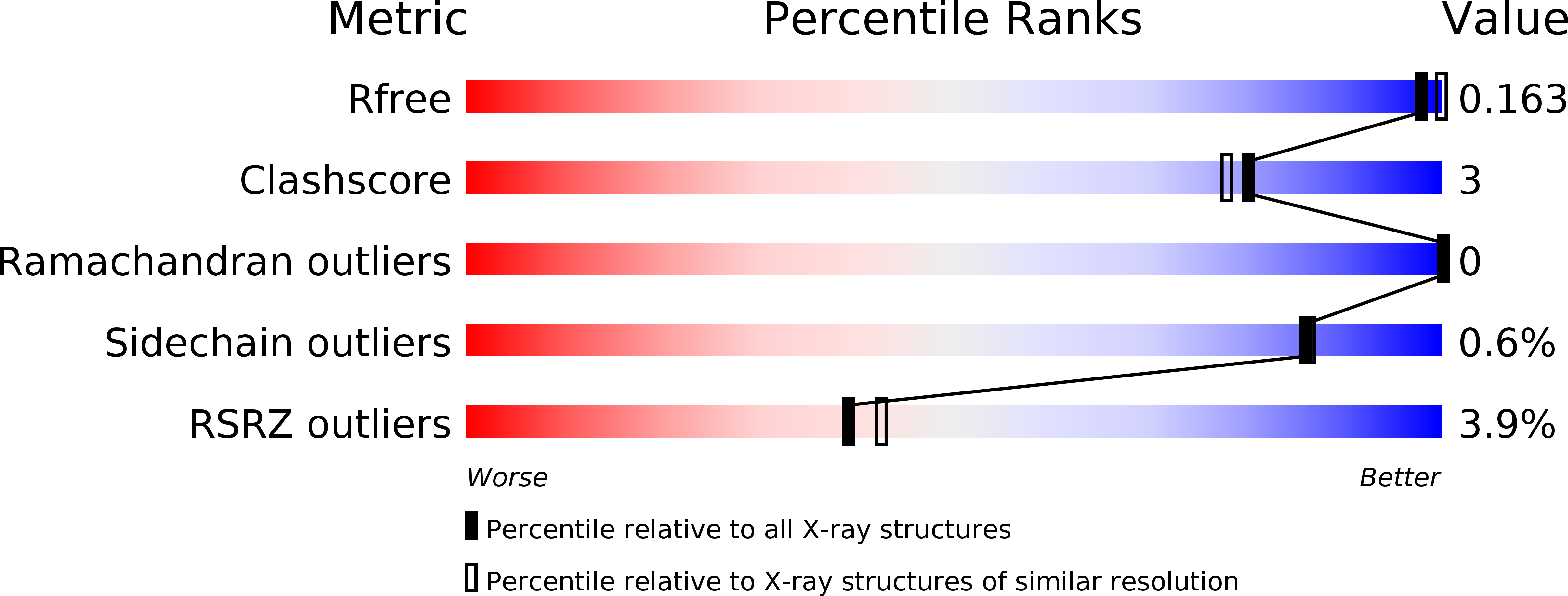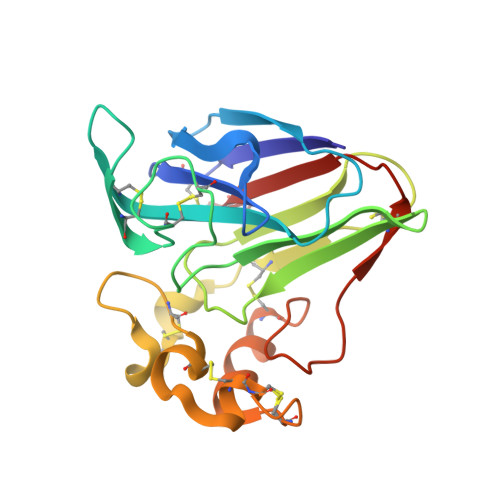In vacuo X-ray data collection from graphene-wrapped protein crystals.
Warren, A.J., Crawshaw, A.D., Trincao, J., Aller, P., Alcock, S., Nistea, I., Salgado, P.S., Evans, G.(2015) Acta Crystallogr D Biol Crystallogr 71: 2079-2088
- PubMed: 26457431
- DOI: https://doi.org/10.1107/S1399004715014194
- Primary Citation of Related Structures:
4ZXR - PubMed Abstract:
The measurement of diffraction data from macromolecular crystal samples held in vacuo holds the promise of a very low X-ray background and zero absorption of incident and scattered beams, leading to better data and the potential for accessing very long X-ray wavelengths (>3 Å) for native sulfur phasing. Maintaining the hydration of protein crystals under vacuum is achieved by the use of liquid jets, as with serial data collection at free-electron lasers, or is side-stepped by cryocooling the samples, as implemented at new synchrotron beamlines. Graphene has been shown to protect crystals from dehydration by creating an extremely thin layer that is impermeable to any exchanges with the environment. Furthermore, owing to its hydrophobicity, most of the aqueous solution surrounding the crystal is excluded during sample preparation, thus eliminating most of the background caused by liquid. Here, it is shown that high-quality data can be recorded at room temperature from graphene-wrapped protein crystals in a rough vacuum. Furthermore, it was observed that graphene protects crystals exposed to different relative humidities and a chemically harsh environment.
Organizational Affiliation:
Diamond Light Source, Harwell Science and Innovation Campus, Didcot OX11 0DE, England.


















